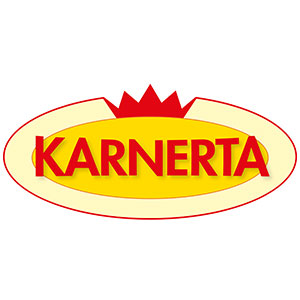Highly automated processes and a paperless office

How do I make the paperless office a reality at my company?
The following situation might sound familiar to you: you or one of your employees hurry into the office in the morning, turn on the computer, create one invoice after another, print them, put them in envelopes, and even take them to the post office in the evening. This is still standard procedure at many companies, even in the digital era. But the coronavirus has turned paper-based processes upside down. While employees work from home, important paper documents and other things they need for their jobs are left behind at their offices. And this is just one of many challenges on the way to a paperless office. Read this blog article to learn about a few creative ideas that turned out not to be so brilliant after all and the options that exist especially for small companies to end their paper-heavy processes.
What challenges has the COVID-19 pandemic caused in terms of work processes, e.g., in accounting?
For many office workers, the biggest challenge was definitely the abrupt change. Personally, I have seen friends and family try new approaches to handle this situation. One example was this: while all employees of a company worked from home, one of them went to the office, opened all the mail, scanned invoices, and then e-mailed them to co-workers in the accounting department. It turned out that without pre-allocation to an account, this process wasn’t nearly as useful as planned and it was dismissed quickly. A bigger hiccup happened at another company I know. An employee had asked all suppliers to send their invoices to his home address. Before long, almost tons of food items were delivered to his doorstep because these business partners thought that not only the billing address had changed, but the delivery address as well. Had these companies used Electronic Data Interchange (EDI), this would never have happened.
What business documents can already be exchanged digitally?
Invoices (INVOIC) are just some of many documents that can be digitized. Many EDI users have decided to automate their entire so-called purchase-to-pay process, starting from orders all the way to remittance advices. Among others, this includes order responses (ORDRSP) and despatch advices (DESADV). Generally speaking, all business documents, i.e., including master data (PRICAT – Price Catalogue), can be digitized.
How much money can we save with a paperless office?
The saving potential will depend on the amount of documents, the company size, the internal cost structure, and many other factors. Calculations done for studies, e.g., the one by Billentis, show that compared to paper invoices, invoice issuers will save a total of EUR 6.60 or roughly 60 percent of expenses if they use e-invoices. Similar savings are possible for invoice recipients. And, more importantly, the savings potential goes beyond invoices because all other process steps can be improved as well.
How does this process work in practice if a company does not yet exchange any data electronically?
Ultimately, this is all about connecting one company to others so that they can communicate with each other in a digital format. The first step will be a commercial agreement between companies. Here is a real-life example: let’s assume that a manufacturing company supplies a certain amount of goods to a retailer. These companies will first exchange master data and update them periodically. This is all about product-related information, e.g., article numbers (GTIN/EAN), weights, labeling, nutritional information, and much more. Whenever a retailer places an order, movement data will also be included. Companies could still choose to exchange this information on paper like they did 40 years ago. However, it does not have to be that way because there is the option of creating interfaces between companies’ ERP systems. This electronic process is available for large and small businesses alike.
How many invoices do I need to issue for this to pay off?
Fully automated Electronic Data Interchange usually makes sense if you do business on a regular basis and if there is a substantial document volume. If you only issue five invoices per month, it does not pay off to spend money on interfaces. The benefit-cost ratio should be taken into account. Here is the good news: there are great solutions that allow companies of almost any size to benefit from digitization. A key element will be the willingness to introduce change at the executive level. After all, in this day and age, you just cannot work like you did back in the old days.
What solutions are available for small businesses?
An e-invoicing solution for SMEs can be implemented in a single day to make any business ready to use EDI. With this so-called Web EDI solution, users sign in to the system online. There is no need to have an ERP system.
If you would like to learn more about Web EDI, I recommend reading the following article: “Everything you need to know about Web EDI for SMEs”
A good compromise solution is the so-called PDF e-invoicing system based on PDFs. These invoices can be sent fully electronically, but only if business partners have the necessary infrastructure for incorporating them directly into their accounting system. In Austria, e-invoices in PDF format have been legally valid since 2013. These can be simple PDF attachments or a more advanced solution that includes an e-mail with a download link. By clicking on this link, the invoice recipient can download and process the e-invoice. The great advantage for senders is that they will see if the recipient has read the document.
How many companies use EDI?
The number is actually higher than you might think. EDITEL alone has connected more than 20,000 businesses to the system. After all, EDITEL is the Austrian market leader in Electronic Data Interchange and also has several subsidiaries in neighboring countries.
How are other growth-oriented businesses approaching the paperless office?
There are businesses that only process 40 to 50 orders per month but expect to see that number increase in two to three years and therefore invest in an ERP system early on. There is also the option of upgrading by adding modules, which will minimize the investment risk. Also, very attractive subsidies are available for small and medium sized businesses that invest in digitization. For comprehensive information, please visit the online portal of the KMU.Digital initiative. A second round of the program started recently because the previously available funds were depleted quickly due to high demand. Whether you receive subsidies or not, any step taken towards digitization is a step in the right direction!
Would you like to learn more about avoiding paper documents in the future while reaching the highest possible degree of process automation? My colleagues and I will be happy to answer any questions you might have. Please use the contact box on the right to send your inquiry.
About the author
Klaus Schaffer
Business Development Manager at EDITEL Austria.
About EDITEL

EDITEL, an EDI service provider, is the internationally leading provider of EDI solutions (EDI = Electronic Data Interchange). The company specializes in the optimization of supply chain processes for companies of all sizes and in all industries.
Portrait photo copyright Editel/Petra Spiola
Symbolic image copyright pixabay












